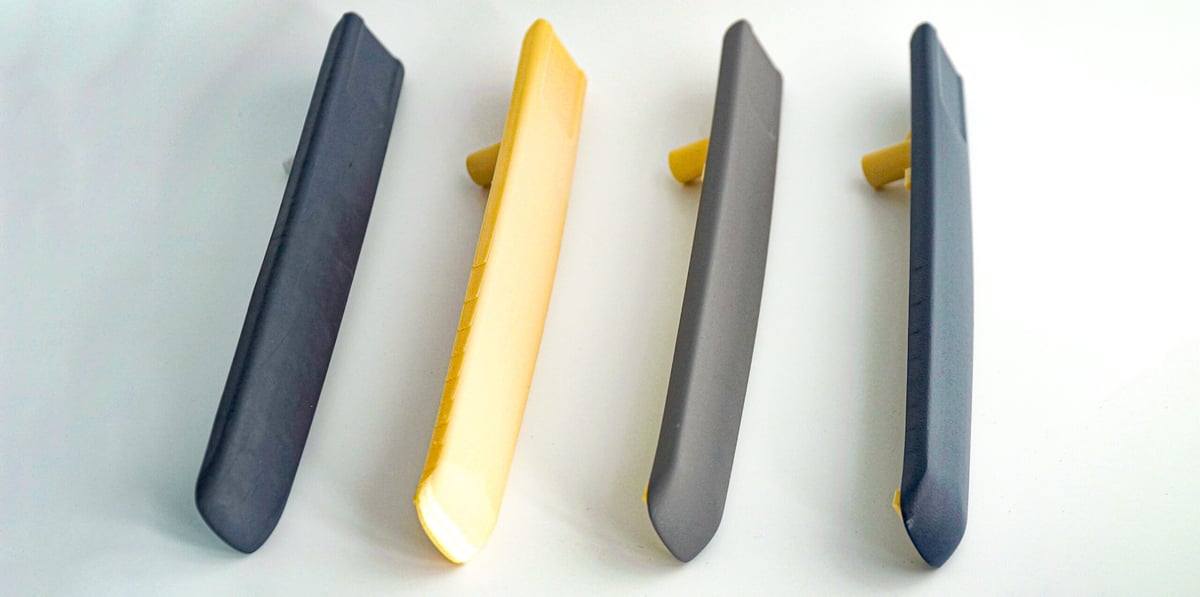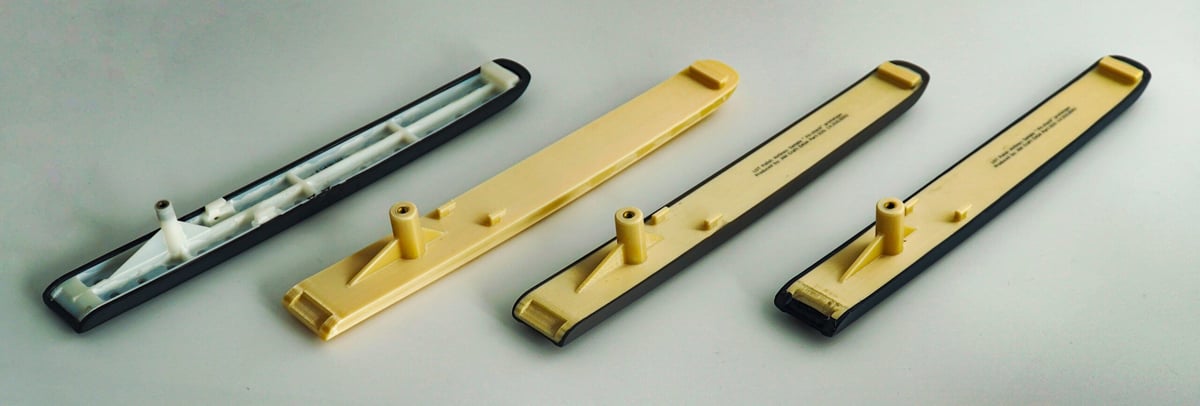Airplane armrest caps — covers at the end of the armrest on passenger seats — wear out after thousands of flights and are commonly replaced with injection molded spare parts housed in a central warehouse that airlines maintain. But when LOT Polish Airlines ran out of spares for their Boeing 737 fleet , they turned to 3D printing them instead.
“Over time, components experience wear and tear in a frequently used space like an aircraft cabin,” says Maja Margul, Continuing Airworthiness Junior Specialist at LOT Polish Airlines. “We maintain an inventory of spare parts to ensure timely replacements as needed. However, occasionally, parts wear out faster than anticipated, become unavailable from the original manufacturer, have extended lead times, or require design enhancements.”

The original arm cap was produced in multiple steps with a rubber cap surface attached to an injection molded frame which was attached to the seat. Over time, the interface between the rubber cap and the plastic frame is degraded and the cap will no longer stay in position on the frame – leading, in the worst case, to the cap coming off in a passenger’s hand. Plus, the plastic frame frequently breaks where it attaches to the seat.
“Originally, we intended to just replace the broken arm caps with replacements from the seat manufacturer,” says Margul, but then they approached 3D printing service provider AM Craft with the problem.
AM Craft offered LOT the opportunity to innovate and improve, not just replace. The company designed a new arm cap as a single 3D printed piece to eliminated the weak point between the two parts. AM Craft’s design also reduced the risk of future breaking in the location that the previous design had experienced.

Since 3D printing does not require the high investment in tooling that injection molding or other traditional manufacturing processes might, AM Craft was able to offer a more cost effective low-to-mid volume price than a new design that relied on traditional manufacturing technologies would be able to achieve. Even when, the final parts were smoothed and painted to color-match the LOT Polish cabin interior, it was still the more economical solution, the airlines says.
Of course, not just any company can 3D print parts for a aircraft. Special certifications are required and AM Craft is one of the few companies certified as an EASA Form 1 additives manufacturer. AM Craft used Stratasys FDM technology and Ultem 9085 polymer filament to produce the printed arm caps. The Mankiewicz Alexit coating system was used by AM Craft to color match and cosmetically finish the arm caps.
“We are proud that we were able to leverage our expertise in design and certification of 3D printed aircraft components to solve their supply chain problem with these arm caps, and we look forward to helping them address additional challenges,” says Didzis Dejus, AM Craft’s CEO. “For commercial aviation, 3D printing has clearly become a highly impactful technology while no one was looking.”
You May Also Like:
License: The text of "Airline Opts to 3D Print 1,200 Replacement Parts for Its Boeing 737 Fleet" by All3DP Pro is licensed under a Creative Commons Attribution 4.0 International License.


